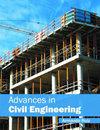对掺入蔗渣灰和硅灰的混凝土耐硫酸性能和收缩率的影响
IF 1.6
4区 工程技术
Q3 CONSTRUCTION & BUILDING TECHNOLOGY
引用次数: 0
摘要
在混凝土中使用普通硅酸盐水泥(OPC)对环境和可持续发展有重大影响。值得注意的是,在生产普通硅酸盐水泥的过程中会产生大量温室气体,导致全球变暖,而且会使用大量天然原材料,随着时间的推移会导致不可再生资源枯竭。此外,有机碳酸钙的生产是高度能源密集型的。为了减少这些问题,通常的做法是用胶凝补充材料(SCM)部分替代 OPC,从而减少混凝土生产中的 OPC 用量。所使用的大多数 SCM 都具有水青石特性,可与 OPC 中的游离石灰发生反应,提供更多的胶凝材料,从而提高混凝土的长期强度,并使孔隙结构致密,从而提高在恶劣环境中的耐久性。本研究探讨了用蔗渣灰(PBA)部分替代 OPC(用量最高为 50%)和 5%硅灰时,OPC 对抗硫酸侵蚀和干燥收缩的影响。这两种材料都是水青石,预计会与 OPC 混凝土中的游离石灰发生反应,从而提高混凝土的强度和致密性;然而,随着 PBA 用量的增加,水泥会被稀释,预计强度会降低。本研究主要侧重于耐硫酸性和减少干燥收缩,探讨了可实现的益处。本文章由计算机程序翻译,如有差异,请以英文原文为准。
Effect on Sulfuric Acid Resistance and Shrinkage of Concrete Incorporating Processed Bagasse Ash and Silica Fume
Using ordinary Portland cement (OPC) in concrete has significant environmental and sustainability concerns. Notably, in the production of OPC, large volumes of greenhouse gases are produced, which contribute to global warming, and large amounts of natural raw materials are used, which can lead to the depletion of nonrenewable resources with time. In addition, OPC production is highly energy-intensive. To mitigate these concerns, it has become common practice to reduce the amount of OPC used in concrete production by partially replacing OPC with a supplementary cementitious material (SCM). Most of the SCMs used have pozzolanic properties and react with free lime in OPC to provide more cementitious material, which increases the long-term strength of concrete and also densifies the pore structure, resulting in improved durability in harsh environments. This study explored the effect of OPC on the resistance to sulfuric acid attack and drying shrinkage when OPC is partially replaced by processed bagasse ash (PBA) at dosages of up to 50%, together with 5% silica fume. Both materials are pozzolanic and are expected to react with free lime in OPC concrete to increase the strength and densify the concrete; however, with increased PBA dosage, the cement is diluted, and a reduction in strength can be expected. This study explores the benefits that can be realized, focusing primarily on sulfuric acid resistance and the reduction of drying shrinkage.
求助全文
通过发布文献求助,成功后即可免费获取论文全文。
去求助
来源期刊

Advances in Civil Engineering
Engineering-Civil and Structural Engineering
CiteScore
4.00
自引率
5.60%
发文量
612
审稿时长
15 weeks
期刊介绍:
Advances in Civil Engineering publishes papers in all areas of civil engineering. The journal welcomes submissions across a range of disciplines, and publishes both theoretical and practical studies. Contributions from academia and from industry are equally encouraged.
Subject areas include (but are by no means limited to):
-Structural mechanics and engineering-
Structural design and construction management-
Structural analysis and computational mechanics-
Construction technology and implementation-
Construction materials design and engineering-
Highway and transport engineering-
Bridge and tunnel engineering-
Municipal and urban engineering-
Coastal, harbour and offshore engineering--
Geotechnical and earthquake engineering
Engineering for water, waste, energy, and environmental applications-
Hydraulic engineering and fluid mechanics-
Surveying, monitoring, and control systems in construction-
Health and safety in a civil engineering setting.
Advances in Civil Engineering also publishes focused review articles that examine the state of the art, identify emerging trends, and suggest future directions for developing fields.
 求助内容:
求助内容: 应助结果提醒方式:
应助结果提醒方式:


